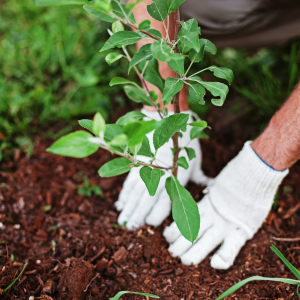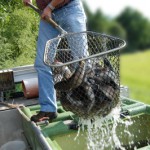 With the warmth of summer on the horizon, it’s time to prepare your garden for the vibrant season ahead. Transitioning your garden to handle the hot summer months is an essential task for every gardener. This shift not only involves adapting your garden to the changing weather but also ensuring that your plants thrive during the summer months. Here’s our comprehensive guide to help you seamlessly transition your garden and make the most out of the summer bloom.
With the warmth of summer on the horizon, it’s time to prepare your garden for the vibrant season ahead. Transitioning your garden to handle the hot summer months is an essential task for every gardener. This shift not only involves adapting your garden to the changing weather but also ensuring that your plants thrive during the summer months. Here’s our comprehensive guide to help you seamlessly transition your garden and make the most out of the summer bloom.
1. Assessment and Tidying Up
The first step in transitioning your garden is to assess the current state of your plants and garden space. Spring, with its unpredictable weather, can leave some plants in need of care. Remove any dead or diseased foliage and weeds that have taken advantage of the spring growth spurt. This cleanup will reduce competition for nutrients and light, essential for your plants’ growth in summer.
2. Soil Care
Summer brings its own set of challenges for soil health, including potential dryness and nutrient depletion. It’s crucial to prepare your soil for these conditions. Begin by testing your soil to determine its pH and nutrient levels; this will guide you on what amendments your garden might need. Incorporating organic matter like compost can improve soil structure, moisture retention, and nutrient content, creating an ideal environment for plant roots during the hot months.
3. Watering Wisely
Watering practices need to be adjusted as temperatures rise. Early morning is the best time to water your garden, as it allows moisture to reach the roots before the heat of the day causes evaporation. Consider installing a drip irrigation system or soaker hoses for efficient watering. Mulching around plants can also help retain soil moisture and reduce water loss.
4. Choosing the Right Plants
Not all plants thrive in the heat of summer, so it’s important to select the right varieties for your garden. Opt for heat-tolerant and drought-resistant plants that can withstand the summer conditions. Some popular choices include zinnias, marigolds, petunias, and sunflowers for flowers, and tomatoes, peppers, cucumbers, and squash for vegetables. You can also always ask your local feed store (like us!) for suggestions.
5. Pest and Disease Management
Summer can bring about an increase in pests and diseases. Monitor your garden regularly for signs of trouble and take action promptly. Using organic pest control methods, such as introducing beneficial insects or applying neem oil, can effectively manage pests without harming your garden’s ecosystem.
6. Fertilizing for Summer Growth
Your plants will need extra nutrients to sustain growth throughout the summer. Apply a balanced, slow-release fertilizer to provide a steady supply of essential nutrients. Be cautious not to over-fertilize, as this can lead to lush foliage at the expense of flowers and fruits.
7. Pruning and Deadheading
Pruning and deadheading are essential practices to encourage healthy growth and blooming. Remove spent flowers to promote continuous blooming in flowering plants. Pruning can also help shape your plants and improve air circulation, reducing the risk of fungal diseases common in the humid summer months.
8. Providing Shade and Support
Some plants may need protection from the intense summer sun. Utilize shade cloths or plant taller crops strategically to provide natural shade to more sensitive plants. Additionally, ensure that tall plants and climbers have the necessary support, such as stakes or trellises, to withstand summer storms and winds.
9. Enjoying Your Garden
Amidst all the care and maintenance, don’t forget to take time to enjoy the fruits of your labor. Set up a comfortable seating area in your garden to relax and admire the beauty you’ve cultivated. Summer evenings in the garden can offer a delightful retreat from the day’s heat.
Transitioning your garden from spring to summer requires attention to detail and a bit of preparation, but the rewards are well worth the effort. By following these steps, you can ensure that your garden remains a vibrant, flourishing oasis throughout the summer months. Whether you’re a seasoned gardener or a beginner, these tips will help you create a summer garden that brings joy and color to your outdoor space.




